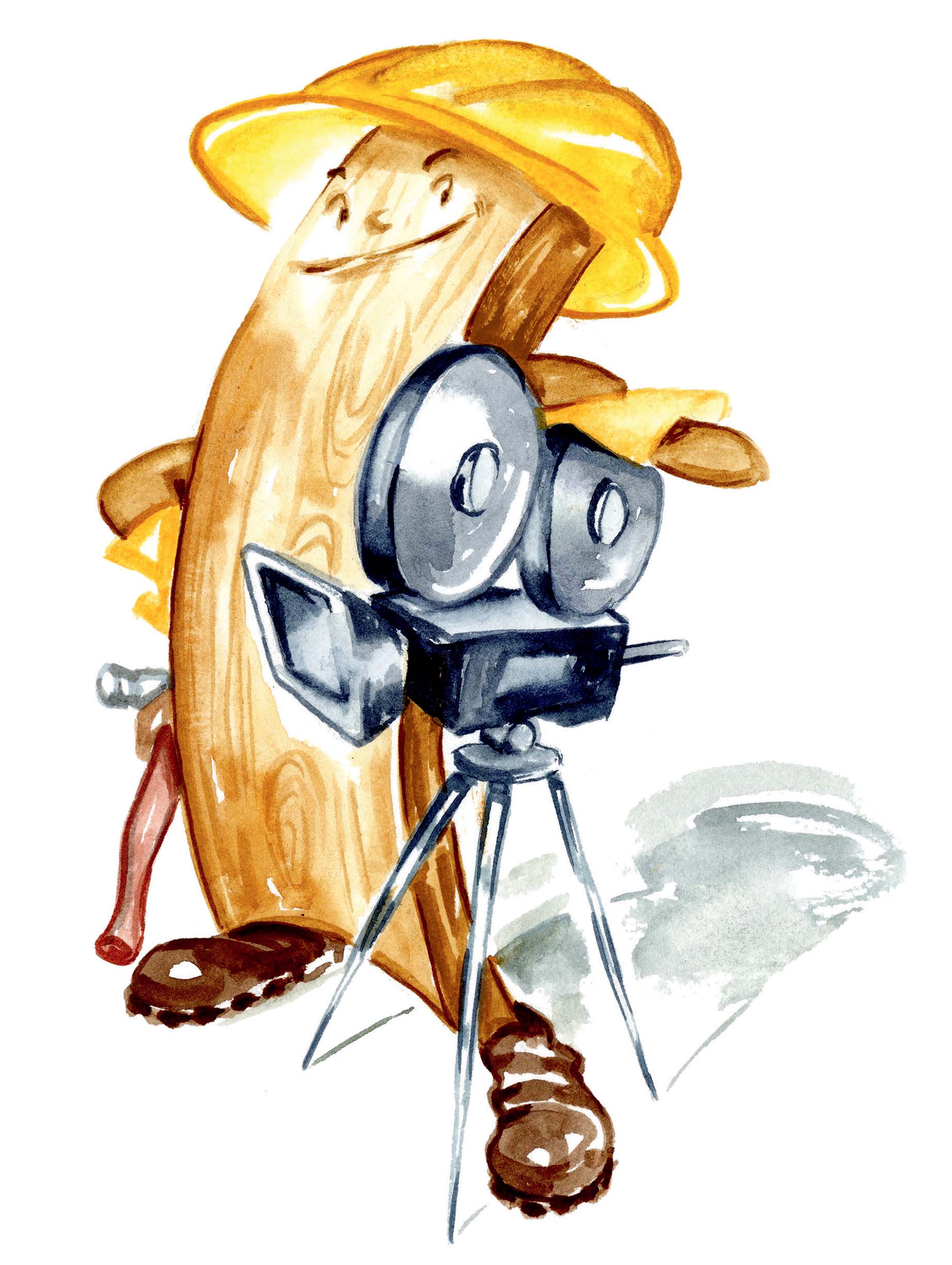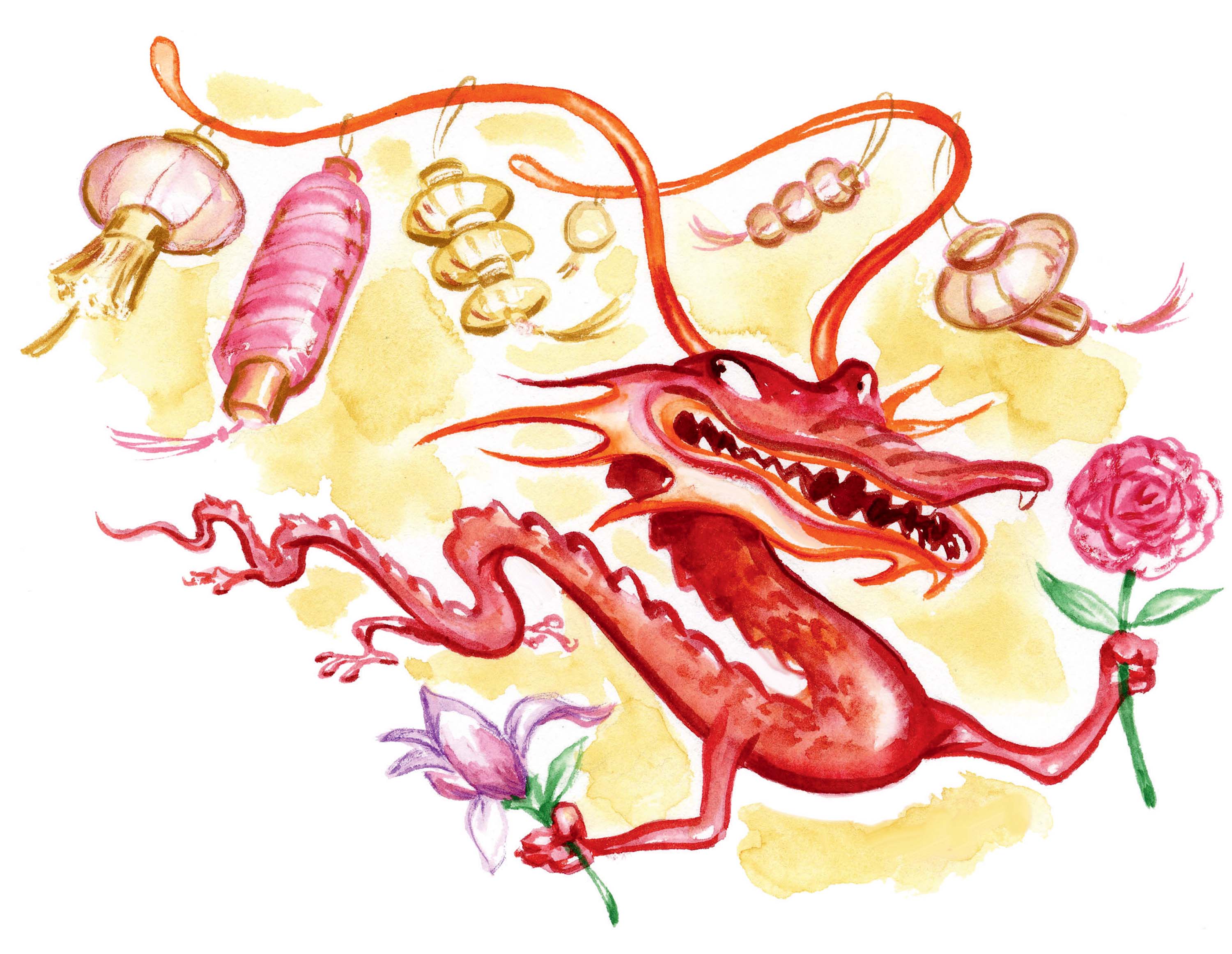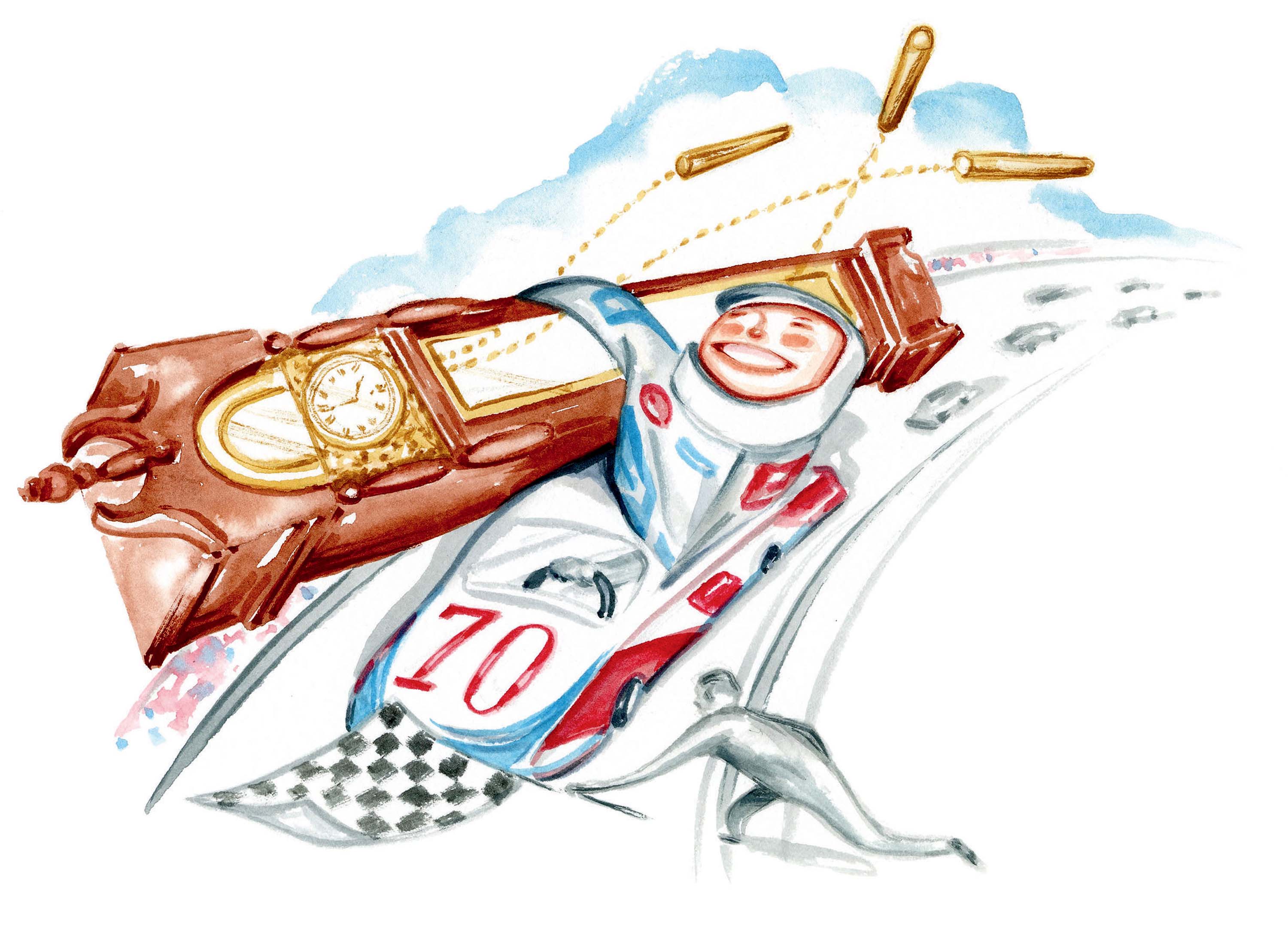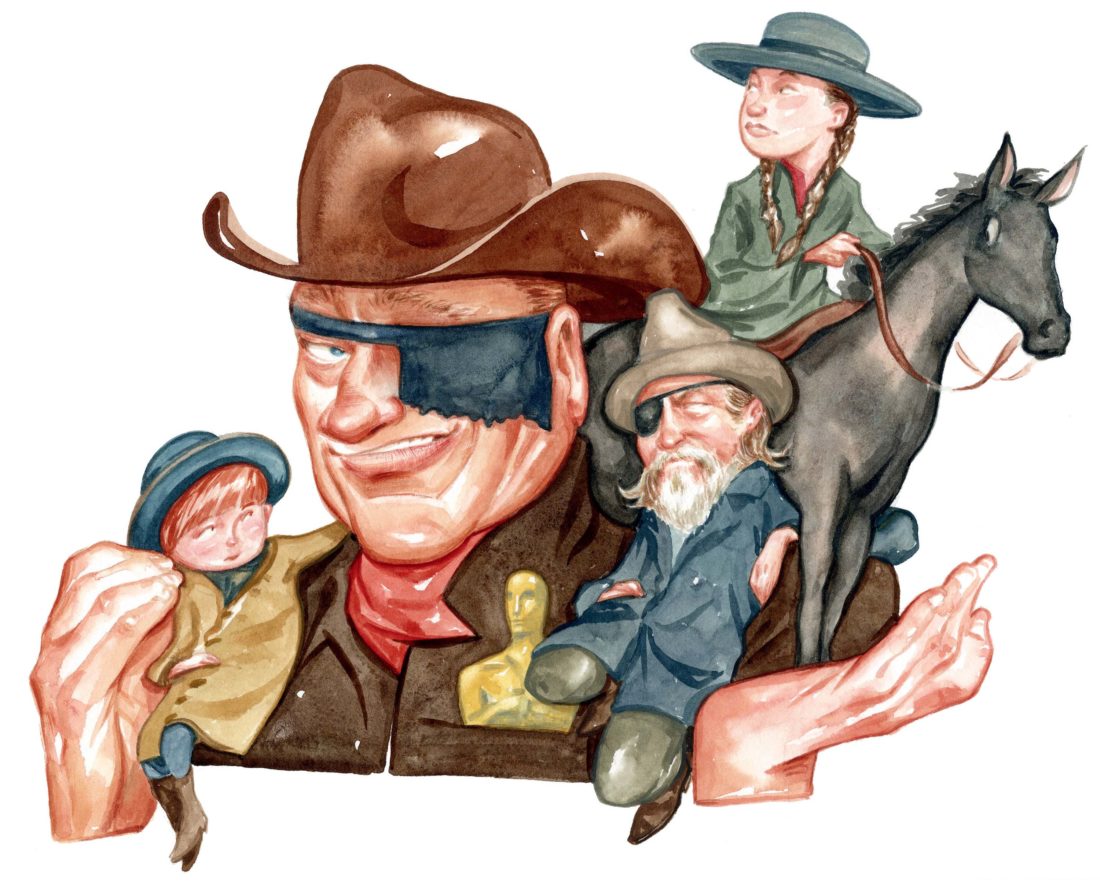ANNIVERSARY
Oklahoma City, Oklahoma
Fifty Years of True Grit
“People do not give it credence that a fourteen-year-old girl could leave home and go off in the wintertime to avenge her father’s blood,” says the narrator, Mattie Ross, in the first lines of True Grit, the 1968 Western novel by Charles Portis and the basis for two heralded films of the same name. The tale follows Mattie and her cowboy sidekick, Rooster Cogburn, on a late-1800s journey of justice through Arkansas and the territory that would become Oklahoma. A new exhibition, Two Grits—A Peek behind the Eyepatch, which opens November 15 at the National Cowboy & Western Heritage Museum in Oklahoma City, marks the fiftieth anniversary of the 1969 film, starring Kim Darby and John Wayne, and compares it with the 2010 Coen brothers remake with Hailee Steinfeld and Jeff Bridges playing the lead roles. “The book is our jumping-off point, and people might be surprised to know that the Coen brothers film follows closer to the book,” says curator Michael R. Grauer. While the 1960s version modernized Mattie’s speech, for example, the later adaptation used more of Portis’s original scripture-laced dialogue. Props and costumes from both films will be on display, as well as a trove of John Wayne memorabilia, including his film script, his eye patch, and the actor’s only Academy Award (for his portrayal of Rooster). At the opening reception, Wayne’s granddaughter and museum board member Anita Swift will share behind-the-scenes tidbits—“Some of my grandfather’s boots will be on display,” Swift says, “and people will be surprised: He was six foot three, and if you shook his hand, you would have thought a bear was shaking your hand, but he had little tiny feet.” As a thirteen-year-old watching the earlier film in a Hollywood theater, Swift remembers, she was mesmerized by the unyielding female lead bossing around her grandfather’s character on-screen. “Mattie Ross was a good foil for Rooster,” Swift says. “She brought out the tenderness and humanity in this gruff old man—and she was tough, too.” nationalcowboymuseum.org
PHOTOGRAPHY
Alabama
Roadside Rembrandt
“Few American artists,” wrote the New York Times in its 2016 obituary of the Tuscaloosa-born photographer William Christenberry, “have been so identified with one small patch of terrain as Mr. Christenberry was with Hale County, Alabama.” Widely regarded (alongside Walker Evans and William Eggleston) as one of the finest lensmen the South ever produced, Christenberry returned year after year from his longtime home in Washington, D.C., to the rural Black Belt region, where he’d spent many childhood summers, shooting the same humble settings time and again—warped and weathered country stores, kudzu-choked churches, rusted sedans, one-chair barbershops, faded Coca-Cola signs on boarded-up cafés. He captured many of these straightforwardly composed but striking images of a vanishing South—“a poetic evocation of a haunted countryside,” Walker Percy called them—as small-format color snapshots with an amateur Kodak Brownie box camera, the core premise of the exhibition Bill Christenberry: Brownies, running through November 10 at the Montgomery Museum of Fine Arts. “It’s a very intimate show—we’re only featuring thirteen pieces,” says Jennifer Jankauskas, the museum’s curator of art, with most of the works from the 1960s and ’70s and almost all of Hale County. “They’re a love letter to the state and to his history here.” mmfa.org
OUTDOORS
Arkansas
Call of the Wild
From 1981 to 1985, in the vicinity of Arkansas’s Buffalo National River, wildlife officials released 112 Rocky Mountain elk, the closest living relatives of the state’s native Eastern elk, which fell victim to overhunting and habitat destruction in the 1840s. This restoration attempt succeeded, well, wildly, and the Arkansas herd now exceeds 600. The elk have become a self-sustaining population, and hunting is tightly managed—only about thirty permits are issued to Arkansas residents through an annual lottery. Autumn also brings different kinds of hunters: sightseers and nature photographers. Mid-September through October is prime elk viewing season, when bull elks’ thoughts turn to love and they emerge from the deep woods seeking partners and wearing their full racks of antlers. Bulls bugle—an eerie sequence of bellow, squealing whistle, and grunt intended to lure mates and warn off rivals. Fighting and locking of antlers often ensue. Some of the best spots to watch the primal proceedings lie in the Boxley Valley, a seven-mile stretch along Highways 43 and 21 south of Ponca. In early mornings and around dusk, oglers armed with binoculars and telephoto lenses pull over and scan the fields. Cooler days and peaking fall foliage only sweeten the ambience. “It just all kind of lines up perfect,” says Brad Savage of the Ponca Elk Education Center. Stop by the center for maps and intel on the latest sightings. nps.gov/buff

Tim Bower
STYLE
Florida
Patching Apalach
Swoop over the John Gorrie bridge and into Apalachicola, and you can’t miss the Gibson Inn. A grande dame of Old Florida, its shady porches and cupola have dominated downtown Apalach since 1907. When developer Steven Etchen bought the Gibson last August, he and his business partner and younger sister, Katharine Etchen Couillard, had ambitious plans to restore the hotel and undo some of its 1980s-era revamping, which included ceramic tile and wall-to-wall carpet. But Hurricane Michael arrived two months later, battering the property. Once the electricity came back, the siblings pressed on, hiring local craftsmen to restore the cupola, refresh the lobby, and build custom pieces including a handsome pine check-in desk modeled after the one depicted in a turn-of-the-century photograph of the hotel. They also added six new suites, and by November, eight additional rooms will open in an adjacent mansion that they restored and added to the hotel’s footprint. Room by room, workers are spiffing up the entire property, pulling up dated carpet, refinishing native heart-pine floors, and outfitting bathrooms with marble and bigger showers (although the claw-foot tubs remain). A refreshed courtyard and new pool will come next year. A lot won’t change, though: The white rocking chairs and the blue-and-white paint scheme remain, the Parlor Bar is still a favorite local haunt, and the dining room still focuses on fresh-caught ingredients—oysters, Gulf shrimp, and scallops. General manager Cutler Edwards is a historian, so he’s reassuring the inn’s admirers: “This place has lived through a lot of eras. We’re trying to bring it back to its best self.” gibsoninn.com
ANNIVERSARY
Georgia
Building a Legacy
In 1919, Reid Cofer and his brother, Kelley, ditched their traveling business model of hawking goods out of a horse-drawn carriage for a permanent shop in the unincorporated town of Tucker—located halfway between their family home in Snellville and big-city Atlanta. One hundred years later, Cofer Brothers retains its reputation for providing whatever its community needs, evolving from a general store to a department store to a building-supply company. But when the 2008 recession hit, home building and house repairs in DeKalb County slowed to a standstill. “The years 2009 and 2010 were rough, rough,” says third-generation owner Chip Cofer. “But that was about the time the movie business took off in Georgia. That was a godsend.” The company has since sold lumber and hardware for the film sets of Black Panther and The Hunger Games, and the television series Stranger Things, The Walking Dead, and Ozark, while still staying open for local retail. On October 19, the store will toast its centennial, inviting former employees, customers, film construction crews, and the rest of the community to its lumberyard for a birthday party kicking off the next century of service. “We’re very proud of making it a hundred years,” Cofer says. “Now my goal is to get this fourth generation trained so I can retire someday.” coferbrothers.com

Tim Bower
GARDEN
Kentucky
Bluegrass is Greener
In the nineteenth century, wealthy New Orleanians traveled to Louisville to escape the Deep South’s heat, building summer homes on a swath of land along the Ohio River dubbed the Point. Later, it evolved into a working-class mill neighborhood, until rising Ohio crests led to relentless flooding in the mid-twentieth century, when the Point was largely abandoned. But that’s not the end of its story—now fields of wildflowers have replaced vacant lots as the site opens as the Waterfront Botanical Gardens. “Stepping from the city into the gardens lowers your blood pressure twenty points,” says Kasey Maier, president of the gardens. “Downtown Louisville has never had something quite like it.” After two decades of fund-raising, deed clearing, master planning, and one $1.5 million gift from a local garden enthusiast, construction finally began in 2017. On October 4, an education center, a native plant patch, a pollinator meadow, and an edible garden will open on six of the eventual twenty-three acres that will someday also boast a conservatory, a visitor’s center, and more rambling gardens blooming toward the Louisville skyline. waterfrontgardens.org
FOOD
Louisiana
Brunch Writ Large
Start with one Napoleonic anecdote, then add live zydeco and more than five thousand fresh eggs. That’s the recipe for the Giant Omelette Celebration (November 2–3), held each fall in Abbeville, a small town near Lafayette. The festivities hearken back to an apocryphal account of Napoleon enjoying an omelet at an auberge in the village of Bessières in the South of France, and then insisting that every egg in town be gathered so his entire regiment could savor the same dish. Every Easter, Bessières commemorates this legend with a fifteen-thousand-egg replica of the original, and the tradition has spread to other towns in France, Belgium, Quebec, New Caledonia, and Argentina, each local chapter giving the basic ingredients its own regional twist. In Abbeville, that means crawfish tails and Tabasco. “This region is rediscovering its French heritage,” says Arlene Collee, one of the local organizers. “It’s a real cultural exchange.” The weekend includes concerts, art shows, egg-centric games, and a procession of white-toqued chefs leading up to Sunday afternoon’s featured entree, which gets sautéed in a twelve-foot skillet and served to all comers free of charge. With cooking on such a grand scale, though, Collee admits that there’s a slight catch: “It ends up being scrambled eggs.” giantomelette.org

Tim Bower
ART
Maryland
Man of Steel
Although Melvin Edwards has been shaping steel into massive welded sculptures for more than fifty years, only in the last ten has the Texas-born sculptor’s work received the respect it deserves. “He is a titanically important artist and pioneer,” says Christopher Bedford, the director of the Baltimore Museum of Art. “There is a generation of object makers who work in his conceptual debt.” The exhibition Melvin Edwards: Crossroads (September 29–January 12) features nearly two dozen abstract and layered steel sculptures by the eighty-two-year-old artist, who is the great-great-great-grandson of a West African blacksmith. Since the 1970s, Edwards has traveled throughout Africa, meeting blacksmiths and carvers, forging connections between their work and his creations, and mentoring the next generation of African welders. Born in Houston in 1937, Edwards played football and studied art at the University of Southern California, and then, in 1963, began his seminal series Lynch Fragments, forming found objects into welded steel works made up of nails, spikes, chains, and bolts that suggest bondage. Many of those pieces will appear in this exhibition, along with some of his larger works, including Agricole, which depicts a welded steel plow blade suspended by chains. artbma.org
MUSIC
Mississippi
Out of the Blues
“You from the South, you already got the blues when you born,” says Little Willie Farmer, one of fourteen acts lined up for Clarksdale’s Deep Blues Festival (October 17–20). The sixty-three-year-old car repairman and guitar virtuoso ought to know. Trouble came early for him as a child in Duck Hill, Mississippi, when his love of melancholy lyrics and whining guitar riffs hit an off note with his mother, who insisted he stick to gospel. Fortunately, his father encouraged the budding musician to practice when Mama was out of earshot. Self-made in the images of B. B. King, Howlin’ Wolf, and Lightnin’ Hopkins, Farmer learned by ear and eventually earned enough money picking cotton to buy his own guitar. He played Delta juke joints through his twenties, when—surely to his mother’s relief—gospel groups including the Rising Sun Singers recruited him to tour with them for the next fifteen years. The blues eventually called him back, and in 2017, Farmer released his first solo album, I’m Coming Back Home, which includes songs he’ll perform on Saturday, October 19, at the Shack Up Inn. deepbluesfest.com
FOOD
North Carolina
East Meets West, Tar-Heel Style
It’s been a little more than a year since chef Justin Burdett traversed the mountains of Western North Carolina, where he’d helmed restaurants in both Highlands and Asheville, and landed about three hundred miles away in Chapel Hill to apprentice under Bill Smith at Crook’s Corner, the iconic nearly forty-year-old restaurant named an America’s Classic by the James Beard Foundation. Burdett took over in January upon Smith’s retirement, but Smith hasn’t gone far. “I come in for free coffee in the morning and free beer in the afternoon,” Smith says, laughing. In November, both chefs will visit Burdett’s former stomping grounds at the Highlands Food and Wine Festival (November 7–10) and share some of their specialties, including cold fried chicken, shrimp and grits, and Atlantic Beach pie. Throughout the festival, the Crook’s team will join such talent as Carrie Morey of Callie’s Hot Little Biscuit and Shelley Cooper of Dancing Bear Appalachian Bistro to put on dinners, tastings, and master classes. (Although tickets to most of the events sold out shortly after they went on sale in June, the organizers maintain a ticket-exchange Facebook page where, as event goers’ plans change, last-minute tickets often show up.) Despite the fact that Smith learned to cook from his grandmother in Cape Hatteras—about as far from the mountains as one can get in the state—his and Burdett’s cooking styles have a lot in common with each other and those of the rest of the festival’s chefs. Burdett puts it plainly: “We make it until it tastes right.” highlandsfoodandwine.com
GARDEN
South Carolina
Bloom and Grow Forever
Magnolia Plantation—established along Charleston’s Ashley River in 1676—has long been recognized as home to one of the nation’s most beguiling gardens. Guests wander fields of daffodils, meander along azalea-lined paths, and marvel at the twenty thousand camellias that bloom pink, white, and red each November through April. So what could possibly make this “earthly paradise,” as its nineteenth-century owner John Grimke Drayton called it, any more spectacular? Try hundreds of Chinese lanterns—and the garden’s first-ever nighttime illumination spectacle. Lights of Magnolia: Reflections of a Cultural Exchange (November 15–March 15) is a partnership between Magnolia and Zigong Lantern Group, the largest Chinese lantern festival operator in the world. For the past year, more than a hundred artisans have been building lanterns with waterproof and fireproof silk spread across steel frames, fusing historic Chinese symbols with images of Magnolia’s flora and fauna. “Since the garden is so beautiful, we have created a natural theme,” says Meng Liu, one of the lantern group’s executive directors. Loath to spoil the surprises that await, Liu was hesitant to reveal more, but she did let one detail slip: A sixty-meter-long Chinese dragon lantern will wind beneath the live oaks and Spanish moss. magnoliaplantation.com

Tim Bower
MUSIC
Tennessee
All Hail Dolly
In the fifty years since Nashville’s Grand Ole Opry inducted Dolly Parton, her rise to international superstardom, and her unwavering kindness to those who followed her, have become emblematic of what the long-standing weekly country program always hoped to promote. “Every show has this special mix of new voices, superstars, and even legends,” says Sally Williams, the general manager. “Dolly started as a young artist and has been part of the Opry through all of her successes. She represents what this show is all about.” In October, the Opry will celebrate the star with Dolly Week, a three-night run of special performances at the Ryman Auditorium and the Opry House (October 10–12) plus plenty of Nashville fanfare, including the release of long-buried archival footage and the unveiling of a new larger-than-life mural. The shows will include tributes from country musicians on Thursday, and bluegrass and Americana artists on Friday, and a grand finale from Parton herself (along with a few friends) on Saturday. Her legions of fans in the industry are quick to point out all the ways Parton has shaped the South, even beyond the stage. “Dolly broke the rules back when no one else was doing that, and she is as much an outlaw as Willie, Waylon, or Johnny Cash ever was,” says the singer-songwriter Drew Holcomb. “But my kids know Dolly Parton as the woman who mails them books every month. Her Imagination Library has sent more than a hundred million free books to kids all over the world. Hers is a legacy that goes way beyond music.” opry.com
OPENING
Texas
Seeing Red
Linda Pace, the artist and art patron of Pace Picante salsa fame, for decades kept a journal beside her bed in San Antonio to scribble down notes and doodles sparked by her dreams. With the help of her studio assistant, Kelly O’Connor, she transformed many of her drawings into sculptures—and she kept coming back to one page that detailed a crimson building reminiscent of Oz’s Emerald City. Eventually Pace realized she had envisioned a way to store and display her art collection, and she began putting her plans for a new museum, Ruby City in San Antonio, into action before she died in 2007. Pace tapped David Adjaye, one of the architects behind the National Museum of African American History and Culture in Washington, D.C., to lead the project. “Adjaye looked at a few things: the land and San Pedro Creek adjacent to where the building would be,” says O’Connor, now Ruby City’s head of collections. “He looked at her collection and how she lived with the pieces, and he looked at the context of San Antonio as a whole.” Then he designed the fourteen-thousand-square-foot rhomboidal edifice with special concrete engineered in Mexico City and composed of red rock, sand, and recycled glass. Ruby City opens its doors on October 13 to display pieces by world-class contemporary artists such as Rachel Whiteread and Do Ho Suh, plus some of San Antonio’s brightest stars, including Ana Fernandez and Ethel Shipton. One of Ruby City’s inaugural exhibitions is fittingly titled Waking Dream. rubycity.org
SPORT
Virginia
Racing (For) the Clock
In July 1947, H. Clay Earles opened a humble, half-mile dirt racetrack outside a small factory town in the Piedmont of southern Virginia. Although Earles built the stands to hold 750 people, more than 6,000 spectators packed the bleachers and clung to the fences on opening day to watch stock cars fly. A year later, when NASCAR officially got its wheels rolling, Martinsville Speedway became one of the organization’s founding pillars. October 27 brings the First Data 500, the longest-running race in NASCAR’s history. The winner that day leaves not only one step closer to the Cup Series trophy, but also with a custom-built, seven-foot-tall Ridgeway grandfather clock. “My grandfather wanted a trophy that wouldn’t just sit on a shelf and collect dust,” says Clay Campbell, Earles’s grandson and president of the speedway. “The clock is now one of the most cherished and coveted trophies in all of NASCAR.” Crowds still pack in to see the action, and in-the-know spectators bring their own coolers and grab a couple of Martinsville’s famous Jesse Jones hot dogs topped with chili, mustard, onions, and slaw. The track’s paper-clip-like design provides tight turns for viewers in the stands, plus there’s a grassy hill turned VIP overlook along the backstretch. The layout puts fans closer to the action—and NASCAR history—than does any other track on the circuit. martinsvillespeedway.com

Tim Bower
OPENING
Washington, D.C.
Cart Blanche
Since opening his first restaurant, Himitsu, in D.C.’s Petworth neighborhood, Kevin Tien has checked every box an up-and-coming chef could ask for and then some, winning plaudits from the James Beard Foundation (Rising Chef of the Year finalist in 2018), Food & Wine (Best New Chef), Questlove’s Instagram feed, and even People magazine (finalist for, yes, Sexiest Chef Alive). Lines formed out the door of the twenty-four-seat dining room, with diners willing to wait their turn for such boundary-blurring dishes as red drum in green curry, and charred octopus with black-bean mole. For his next act, the thirty-two-year-old, whose parents emigrated from Vietnam in 1967 and who counts José Andrés as a mentor, is opening Emilie’s, in a much larger space in Capitol Hill along Pennsylvania Avenue that is slated to begin welcoming guests in September. The offerings will include carts of small plates roving around the dining room with breads, dips, seafood, pickles, oysters, and more, “to keep you entertained,” Tien says, “until the big plates arrive.” Expect a casual setting with windows all around, lots of wood, and plenty of plants. “In essence,” Tien adds, “we want to be a true family-style, plate-sharing restaurant.” emiliesdc.com
FOOD
West Virginia
Dine in Denim
Pickled ramps, kil’t greens, and cornbread are the dishes that come to mind when Bryan Skelding, executive chef at the Greenbrier resort, thinks of Appalachian flavors. Home-style recipes made with humble ingredients, they’re a far cry from the caviar service and foie gras starters he oversees at the historic White Sulphur Springs sanctuary’s twenty on-site restaurants, bars, and lounges, which enforce dress codes. Maybe that’s why Skelding is so excited about the resort’s Fall Flavors of Appalachia event (October 5). Guests can skip the dinner jackets and dress slacks for a laid-back affair. “It’s going to have a very casual backyard barbecue kind of feel, but with the same techniques and philosophies as we would use in our white-tablecloth restaurants,” Skelding says. That means gourmet pepperoni rolls paired with Devils Backbone Brewing beers, Virginia ham with Barboursville winery vintages, and pork rinds between sips of Hatfield & McCoy whiskey. The dinner unfolds at the Greenbrier’s Kate’s Mountain Lodge, with denim permissible. Skelding says, “Even the servers will be in jeans.” greenbrier.com








